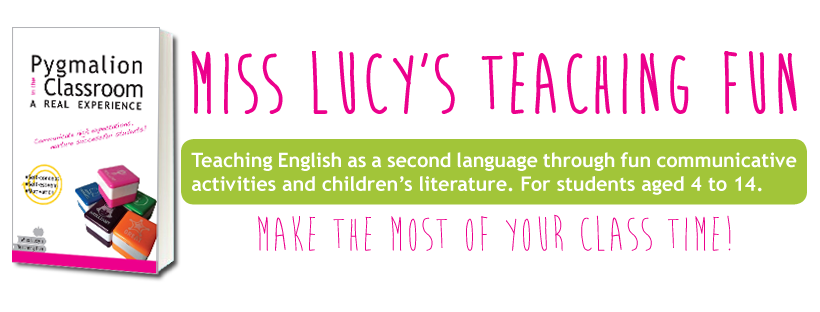 At Summer Camp this year we learned about 'the house', among other things.
At Summer Camp this year we learned about 'the house', among other things.Since the location of the camp is a garden I introduced the topic by asking the children to fetch sticks and dry pine needles to build a simple flat model house in the grass.
 Then I let them choose which room was the kitchen, the living room, the bedroom, the bathroom, the garage and the garden and I placed the corresponding flashcards in each 'room'.
Then I let them choose which room was the kitchen, the living room, the bedroom, the bathroom, the garage and the garden and I placed the corresponding flashcards in each 'room'.After everyone had agreed on the layout of the rooms, we played this simple game: 'Where is the cat (or any other animal or object you know your students may be interested in)?' In this game everybody closes their eyes and you hide the picture of a cat under one of the flashcards representing the rooms. The children have to guess which room the cat is hiding in. Once they've picked the right room, you can let them hide the cat for the other kids, one by one.
Once the topic was introduced, we read a Cat and Mouse book 'Come to My House' which repeats the same pattern as the game. The protagonists go from room to room asking 'Where is Coco?' the cat family's pet parrot.
The next step was learning the song 'Cows in the Kitchen', a pretty catchy song.
We studied animal sounds: moo, quack, meow, baa, oink and meh, with a game in which one kid reproduced one of the sounds and the others had to guess which animal it belonged to. Apparently the most challenging sound to remember was the goat's Meh, as they kept confusing it with the sheep's Baa.

Then we built a cardboard house and stuck pieces of furniture in each room. While working, I left the song on in the background, so the children could continue to learn the words without realising. Other games you can play to teach songs in a more playful way are Musical Statues or Musical Chairs. Kids love them!The last step was painting the farm animals mentioned in the song with finger paint. The most fun part was trying to wash our hands in the garden sprinkles without getting completely soaked. Fortunately the heat wave that covered Madrid for the first 3 weeks of July allowed us to dry off quickly anyway.
Summer Camp 2014
Summer Camp 2013
--> Quiero leer esta entrada en Español














